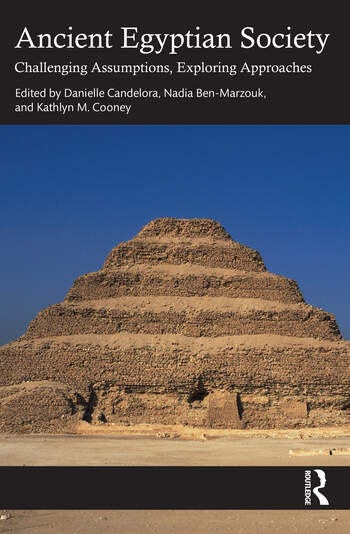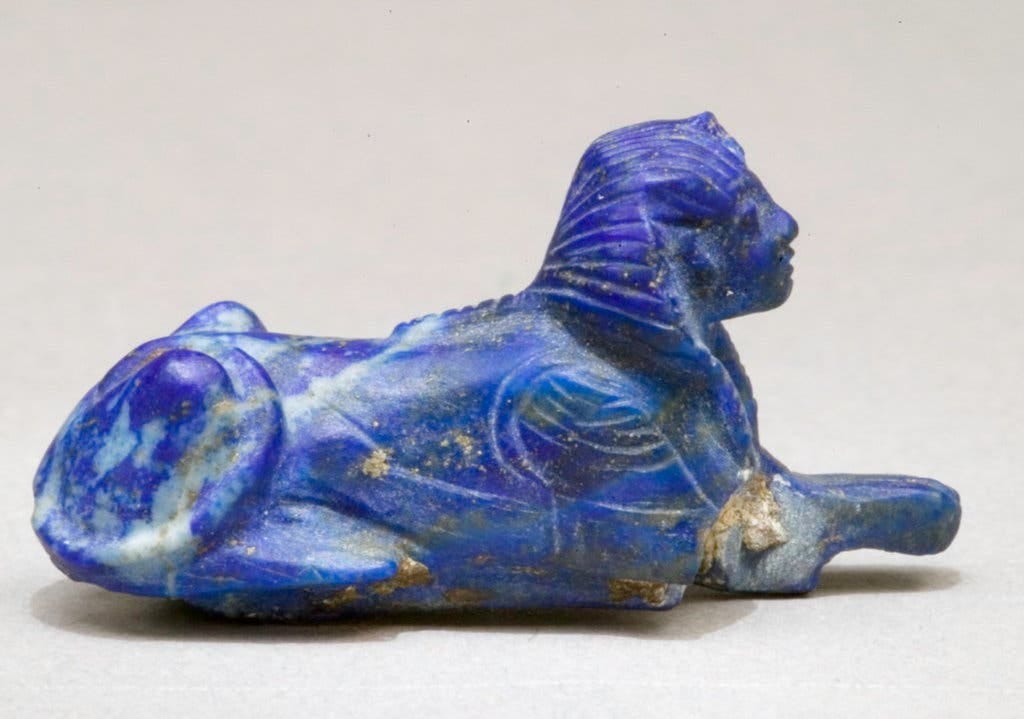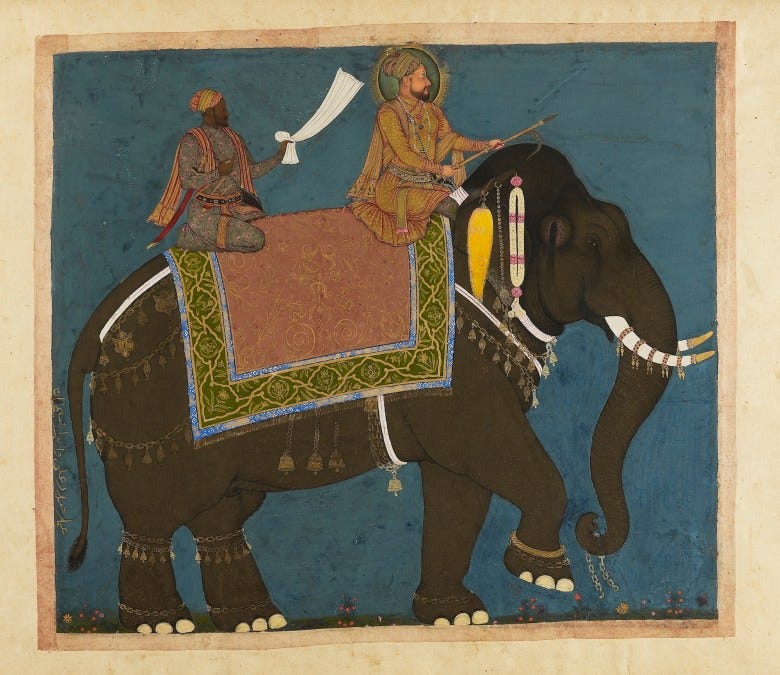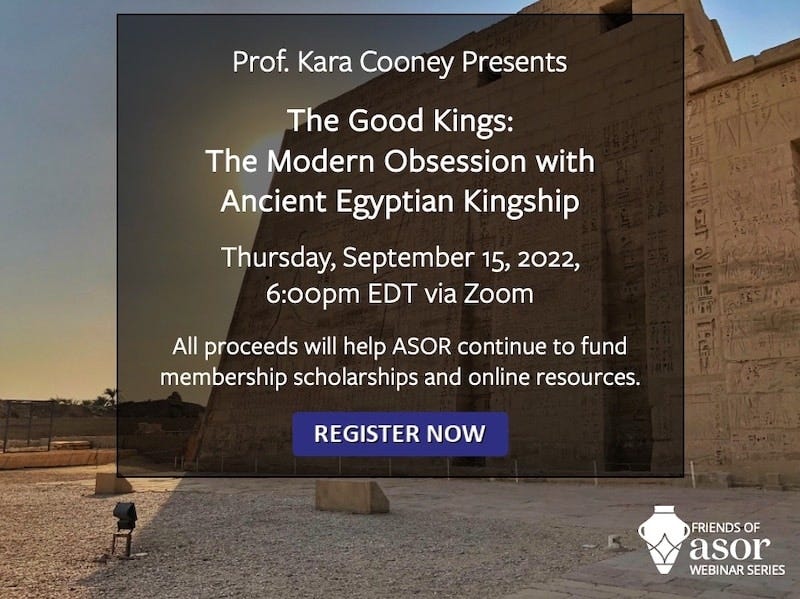Weekly Roundup- August 26th
A new publication, the smuggler (!?) Howard Carter, ancient footprints, and the burial ground of the gods-- keep reading!!
NEW! Ancient Egyptian Society: Challenging Assumptions, Exploring Approaches
Kara has a new co-edited volume on ancient Egyptian society that will be released at the end of August. Both Kara and Jordan have articles in this volume, covering topics from the Orientalization of ancient Egyptian women, environment and geography and agency of place, to how the harem connected an ancient Egyptian king to his elites. Stay tuned, because we have a future podcast episode featuring a discussion with Kara's co-editors for the book, Danielle Candelora and Nadia Ben-Marzouk! This volume is subversive fun (for Egyptologists who know where we are coming from)!
Buy your copy here—at only $35, it’s a steal for an academic publication!!

ASOR Lecture: Kara Cooney, “The Good Kings: The Modern Obsession with Ancient Egyptian Kingship”
Friends of ASOR present the next webinar in our monthly series on September 15, 2022, at 6:00 pm EDT, featuring Prof. Kara Cooney.
Howard Carter stole Tutankhamun’s treasure, new evidence suggests
It’s known that certain pieces from Tutankhamun’s tomb left Egypt under suspicious circumstances—the MET’s return of pieces in 2010, Kansas City's Nelson Atkins Museum’s hawk emblems, Christies’s auction of Carter’s personal belongings), but a new book by Bob Brier has further damning evidence. Brier found an unpublished letter sent to Howard Carter in 1934 by Sir Alan Gardiner accusing him of stealing an object from Tut’s tomb that Carter has asked Gardiner to translate:
The whm amulet you showed me has been undoubtedly stolen from the tomb of Tutankhamun… I deeply regret being placed such an awkward position.
The objects from Tutankhamun’s tomb were not subject to partage—the contemporary partitioning agreement between the Egyptian antiquities service and foreign excavations. Partage, or division, was the expectation of the day. ALL of the objects were to remain in Egypt and clearly Carter was not pleased with the decision to keep Tutankhamun’s objects in Egypt and thus smuggled some out.. With further researchthese pieces can hopefully be re-contextualized (like the work of Gabolde) and repatriated to Egypt.
But, hear, hear for Gardiner being a stand up guy! And we all still use his grammar in class, so…

Archaeologists Made Olive Oil With an Ancient Egyptian Recipe
Dr. Emlyn Dodd attempted to reconstruct the ancient process of producing olive oil according to a snippet in her Twitter thread below. Experimental archaeology as such is helpful in filling the gaps in our knowledge and understanding the particulars of a process. Dodd and her team based their recreation off ancient Egyptian tomb scenes, archaeological evidence, and Classical writings.
In the end they produced a lovely oil, similar to fresh EVOO. What’s everyone waiting for? Get pressing!

Met Acquires Works From Indian Art Collection Previously Rejected Over Provenance Concerns
The MET acquired 2/3 of British painter Howard Hodgkin’s personal collection after it was reportedly rejected by the Ashmoleon Museum in Oxford of provenance issues. This continue the MET’s long history of engaging with and purchasing works of art without clear provenance (Golden mummy example among others).
The acquisition was of 84 Indian paintings and drawings from the 16th through 19th centuries representing Mughal, Decanni, Pahari, and Rajasthani styles of art. Hodgkinson purchases many of the pieces in India personally, but about 40% were art market with little to no provenance.
The Indian government, however does not seem to be interested in repatriation, with the Consul General of India calling the acquisition a “warm welcome.” Here is another example of how repatriation is a complex issue—each country might deal with these matters differently or even welcome a museum's acquisition. Object acquisition is always political, as recent news has shown. In this case at least the objects will be on display and not in a personal collection anymore.

Footprints Discovery Suggests Ancient Tracks May Cover the West
Researchers have spotted footprints dating back more than 12,000 years on an Utah military test range.. Adding to the recent discovery at White Sands, these footprints extend out knowledge of early peoples in the Americas adding further proof that humans crossed over from Asia much much earlier than previously thought.
Seeing preserved footprints adds a touch humanity to the study of the ancient past usually characterized by tools or other material objects, but not remnants of flesh and bone people. These look as if someone walked there just yesterday and serves to remind us of our connectedness.
If you are interested in learning more about the peopling of the Americas, Jordan just read a fantastic book—“Origin: A Genetic History of the Americas” by Jennifer Raff. Oh and check out the little red archaeological flag in the pic below. We have seen sites covered by hundreds of these to mark the scatter of finds.

The Temple of Amun at Medinet Habu: Birth Place and Burial Place of the Primordial Deities
This post focuses on a lecture given by Lucia Gahlin for the Sussex Egyptology Group concerning the small temple at Medinet Habu, the older and oft-overlooked temple to the right when entering the temple complex. This temple was dedicated to primordial form of Amun and the deity’s connection to regeneration and new life.
First built during the reigns of Hatshepsut and Thutmose III (there is some evidence for 11th dynasty foundations below...), there have been multiple iterations of this temple since with the current construction dating to the reign of Ramses III.
In some ways, the small Amun Temple is more important than Ramses III’s mortuary temple— which he placed it there to be in close proximity to Amun’s to gain some of its magical abilities, not to mention the festivals that went through here every ten days. But why did the ancient Egyptian locate an Amun temple at this site in the first place? This location was linked to the mound of creation where Amun and the rest of the Ogdoad created the world and were thought to be buried. It was probably also a kind of spring where Nile waters rose, anticipating the flooding of the river and new life to come. Who would have thunk you were walking over a gods’ womb and graveyard simultaneously!?

In additional Medinet Habu news—the Supreme Council of Antiquities has completed its restoration of one of the interior shrines at the temple. The colors and level of preservation are insane. Great work by the conservators! We hope to visit in December to check it out in person.







